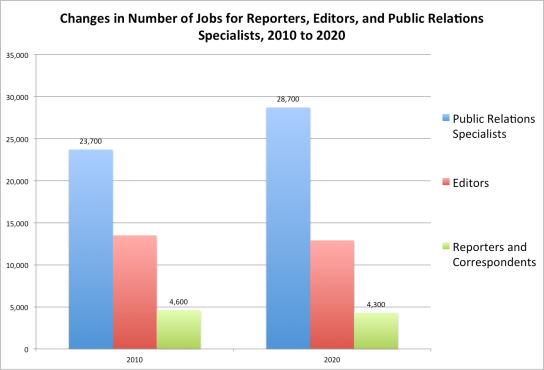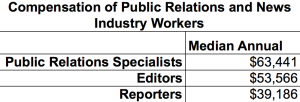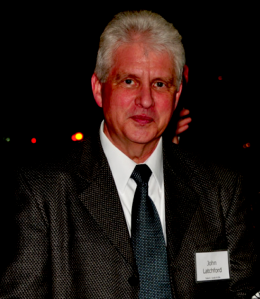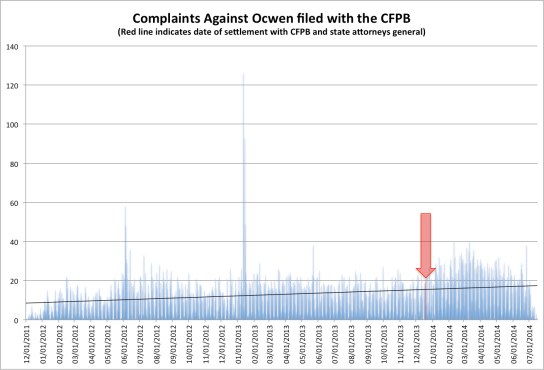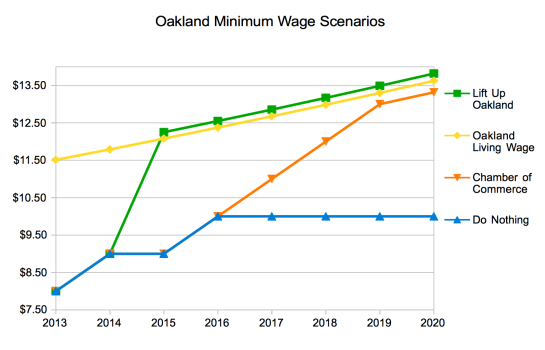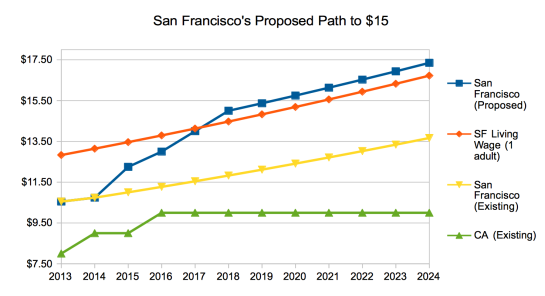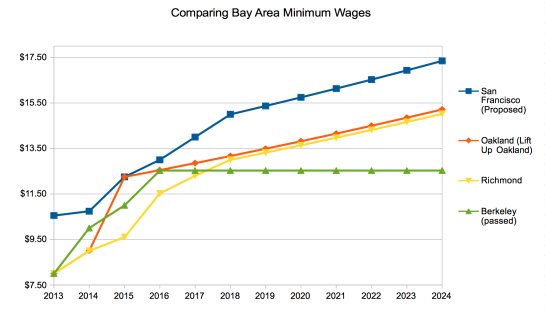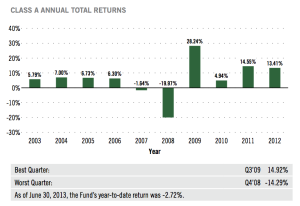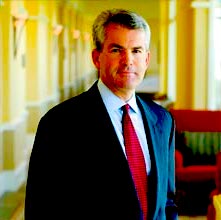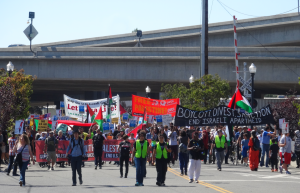
Protesters at the Port of Oakland on Saturday, August 16 march to a marine terminal to block an Israeli cargo vessel from docking.
On Saturday between one and two thousand protesters marched on the Port of Oakland to “blockade” one of its busy marine terminals and prevent an Israeli ship from docking. After confronting a line of police guarding the waterfront the protesters declared victory; the Zim Lines cargo was on a vessel that hovered offshore, afraid to dock, they said, and port workers wouldn’t be unloading it.
One protester looking beyond the line of police and barbed wire fences separating the people from the port explained that the purpose of the action was to “impede the flow of capital.” Stopping one of Zim’s ships—the company’s vessels arrive in Oakland about four times a month, according to Zim’s web site—was a small, but real economic blow against Israel.
Palestinian solidarity activists inside Israel’s biggest economic and military partner, the United States, have worked for years to build a boycott, divest and sanction movement. They’ve asked pension funds and universities to divest from companies that do business with the state of Israel, and they’ve asked academics and musicians to boycott Israel by canceling concerts and shunning conferences. They’ve had some success.

California Governor Jerry Brown and Israeli Prime Minister Benjamin Netanyahu sign a memorandum of understanding, March 5, 2014 in Mountain View.
But if it’s a matter of stopping the flow of capital, the ports are a relatively small conduit of trade between California and Israel. For over 20 years California’s technology industry has been channeling billions of dollars to finance the growth of Israeli tech firms. The flow of capital between California and Israel is digital, transmitted as currency and intellectual property. And this flow of capital occurs mostly through the decisions of a small number private equity firms and perhaps as few as a dozen large corporations. These flows of capital supporting Israel’s economy are less susceptible to social movement pressure.
The amount of support of for Israel’s economy originating from Silicon Valley’s private equity firms is especially large. In 2001, during the first year of the Second Intifada, Sequoia Capital Partners, a private equity firm headquartered in Menlo Park, raised $150 million to invest in Israeli technology companies. This was Sequoia’s second Israel-focused venture capital fund. Last year Sequoia raised its fifth Israel-dedicated fund, totaling $215 million. Since 1999 Sequoia Capital has injected over $789 million into Israel’s software and electronics industries. Much of this money managed by Sequoia Capital was contributed by California investors, including major tax-exempt institutions like the J. Paul Getty Trust, and the Gordon and Betty Moore Foundation, but also from wealthy companies and individuals from San Francisco to San Jose.

The offices of Sequoia Capital Partners in Herzliya Pituach, Israel.
Accel Venture Partners, another one of the giants of Silicon Valley private equity, set up its first Israel-focused investment vehicle in 2001. Joseph Shoendorf of Accel told the Haaretz newspaper in 2007 that Accel has invested over $200 million in 20 Israeli companies. He added that many of Accel’s investments in Israel are not the run-of-the-mill consumer apps and gadgets that are so popular in the Bay Area’s tech scene. Although Israeli engineers produce plenty of that, Shoendorf said, “the world’s security situation is expected to get worse, and as a result, inventiveness will increase. The armies of the world are seeking solutions to a problem, and will encourage technological answers.” Last March, Accel successfully raised $475 million for a fund that will burn a lot of its powder supporting Israeli tech companies.
A lot of California’s venture capital has been exported to Israel to fund military and cybersecurity startups. Israeli society, constantly mobilized for a counter-insurgency war and occupation, creates an environment in which the nation’s hi-tech firms see their main role as contributing to the security of the Jewish state.

Google rents 8 floors in this Tel Aviv office tower.
But the U.S. tech industry is also steeped in surveillance and weapons companies, and even the big consumer and enterprise brands like Google, Microsoft, and Cisco produce militarized software and hardware for use here and abroad. The contributions of Hewlett Packard in creating Israel’s biometric tracking system to control the movements of Palestinians is well known. Hewlett Packard also maintains the Israel Defense Ministry’s server farms, a job IBM previously held. What makes the California-Israel economic connection powerful, however, isn’t so much the nature of the technologies being traded, and the capabilities they provide the Israeli state and military, but more so the sheer economic value of these transactions.
Foreign direct investment into Israel has risen since 2010, and the United States is the key source of capital for Israeli companies. According to the Organization for Economic Cooperation and Development (OECD) Israel received $1.846 billion from U.S. investors in 2012, a total that has likely risen over the past two years. That’s about two thirds of the total military aid the U.S. government provided Israel the same year.
U.S. investors have built up large positions in Israel’s economy, mostly through ownership of stock in Israeli corporations. In 2012 U.S. investors held a $19.7 billion stake in Israel’s economy, more than double the interest owned by all European countries combined. And corporations registered in the Cayman Islands, a tax shelter where thousands of American investors establish offshore funds, owned another $8.6 billion of Israel’s economy. For example, the Sequoia Capital Partners venture firm of Menlo Park raised $215 million last August to invest entirely in Israel. The legal place of incorporation for this fund? The Cayman Islands.
California investors own and manage stakes in Israeli companies like Mellanox Technologies, Ltd.. In 2002 Silicon Valley venture capital firms and several U.S. tech companies provided Mellanox with $64 million in funding. The American investors included three Menlo Park private equity firms, Sequoia Venture Partners, U.S. Venture Partners, and Bessemer Venture Partners, as well as technology giants IBM and Intel. Using this capital, Mellanox, headquartered in Yokneam, Israel, grew from a small company into a transnational technology giant valued today at $1.8 billion. It’s a key supplier of hardware to Hewlett Packard, IBM, and Intel. It’s main office in Yokneam looks like any other tech campus you can see in San Mateo County off the 101 Highway, with gleaming glass mid-rise buildings tucked among trees and grass.
Yokneam is in the heart of Israel’s Silicon Wadi (wadi being “valley” in Arabic). Prior to 1948 Yokneam was called Qira, the site of a Palestinian village and farms, but the area was “depopulated” and occupied by Israeli forces, and later settled and transformed into one of Israel’s most affluent cities.
Lots of Silicon Valley venture capital firms have also set up offices in Israel. The location of choice for California investors seems to be Herzliya Pituach, a posh ocean side district of the city of Herliya. North of Tel Aviv, Herzliya is named after Theodor Herzl, considered by many to be the intellectual father of Zionism. The Herzliya Pituach is one of the wealthiest spots in all of Israel, home to many of the nation’s elite families. Bessemer Venture Partners’ Israel office is located just a few blocks from the Marinali Marina yacht harbor, and a short drive from million dollar beachfront homes. Sequoia Venture Partners maintain an office on Ramat Yam in one of the high rise towers with views of the azure Mediterranean Sea.
The business links between Silicon Valley and Israel aren’t apolitical. Many of California’s venture capital investors and technology executives are staunch supporters of pro-Israel causes. They have established numerous nonprofit organizations to strengthen economic and political ties between California and Israel.
The California-Israel Chamber of Commerce, located in Cupertino, is funded by Silicon Valley companies, investors and law firms like Intel, Paypal, Silicon Valley Bank, and Morrison Foerster. Executives from these companies sit on the Chamber’s board of directors. Their ties to other pro-Israel political groups are numerous.
Zvi Alon, a director of the California-Israel Chamber, also runs a family foundation out of his Los Altos Hills home. Alongside a donation of $9,900 in 2011 to the California-Israel Chamber, Alon also made donations worth $36,000 to the Friends of Israeli Defense Forces according to tax records. Alon is also credited as being a founder of Israel21C, an “online news magazine offering the single most diverse and reliable source of news and information about 21st century Israel to be found anywhere.”
Operating out of offices on Montgomery Street in downtown San Francisco, across the Street from Israel’s consulate, Israel21C produces media promoting Israel’s technology companies. Recent articles published by the group include “20 top tech inventions born of conflict,” and a profile of the “maverick thinker” behind the creation of Israel’s Iron Dome missile defense system. A recent film produced by the organization promotes Tel Aviv as a startup epicenter similar to San Francisco.
The General Consul of Israel in San Francisco, Andy David, is a board member of the California-Israel Chamber, as is the president of Silicon Valley Bank. Nir Merry, another board member of the California-Israel Chamber, was born and partly raised in Israel in the Ma’agan Michael kibbutz. His father worked in a hidden underground ammunition factory making armaments used by Jewish commandoes in the battles that created the state of Israel. In a talk to students at the University of California, Santa Barabara, Merry elaborated on the links between Israel’s technology companies and its military.
“I volunteered to become a commando. It’s quite related to the topic of innovation,” said Merry. “Because to be a commando we have to be very innovative.”
The California-Israel Chamber of Commerce will be hosting an international business summit in October at the Microsoft Campus in Mountain View where innovation will be among the topics.
Silicon Valley’s links to Israel have also been promoted through state legislation and the California Governor’s office. In March of 2014 Governor Jerry Brown signed a memorandum of understanding with Israeli Prime Minister Benjamin Netanyahu promising to promote economic links between California and Israel. The setting for the signing ceremony, Mountain View’s Computer History Museum, underscored the centrality of the tech industry in the agreement.








